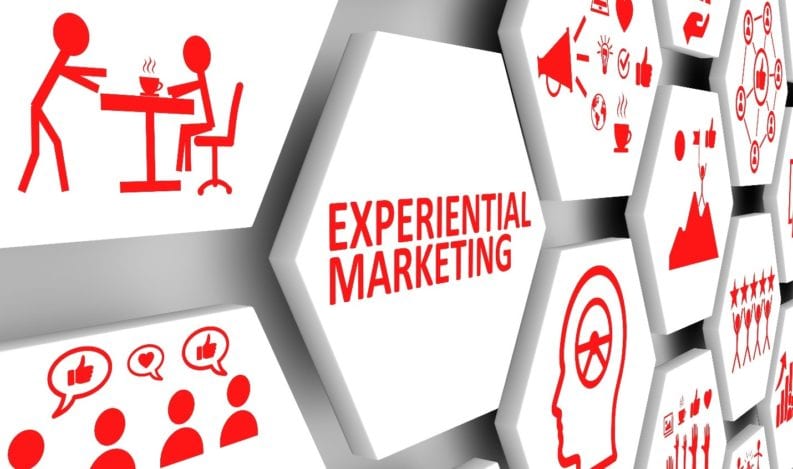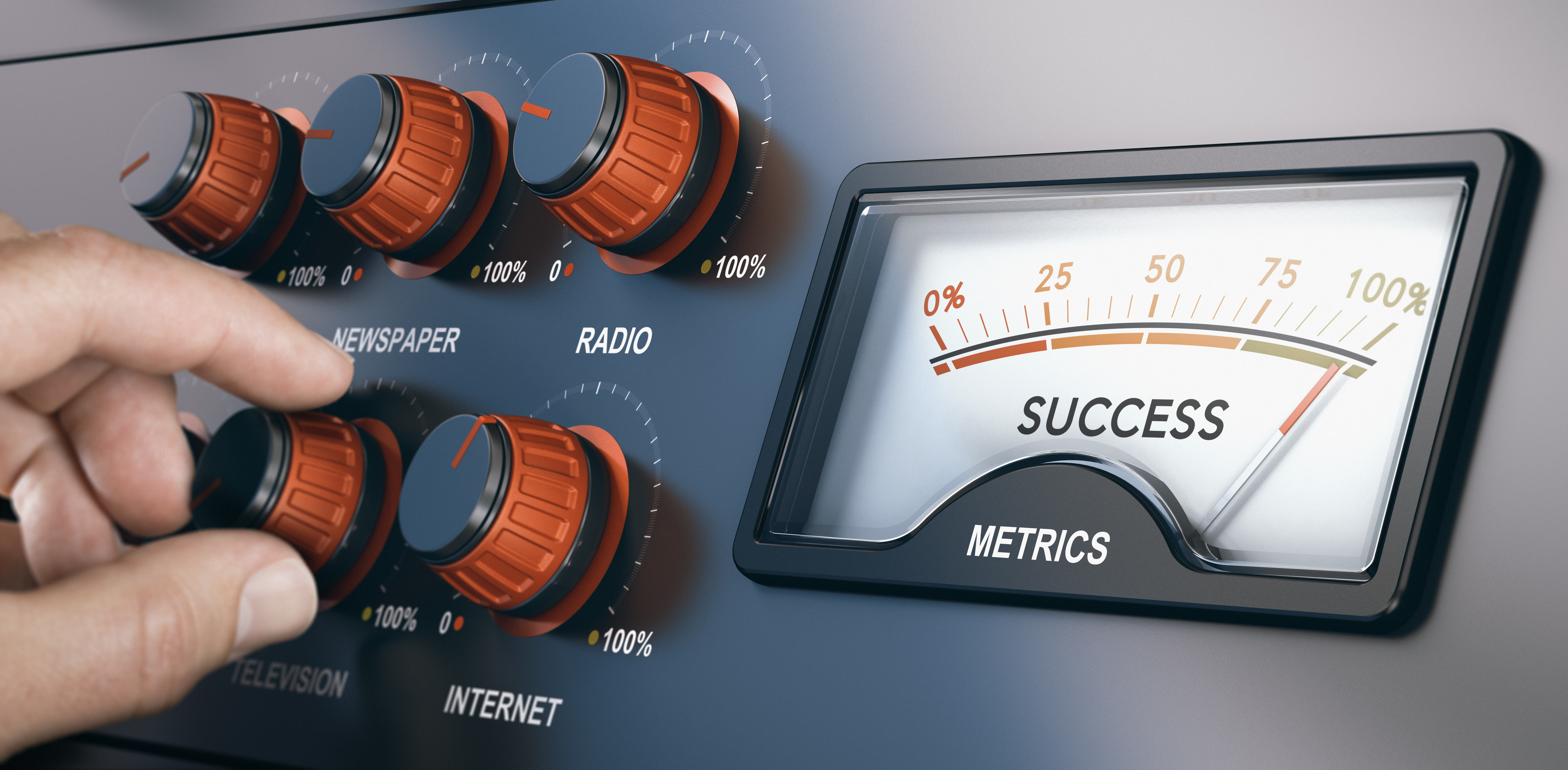
What Is Experiential Marketing, and Why Does it Matter?
If you are a small to a mid-size business owner, you know that connecting with your customers is essential to a successful business. However, if your other marketing strategies are falling flat and you’re ready to improve your marketing, it may be time to incorporate experiential marketing into your tactics.
Experiential marketing is a strategy that goes by many names, like event marketing, on-ground marketing, special events, and engagement marketing. They all refer to the marketing strategy that directly engages with customers and encourages them to participate in a branded experience. But what exactly does that mean, and how can you apply it to your business?
At The H&H Group, we know quite a bit about experimental marketing, so we have created this comprehensive blog post that explains experiential marketing and how it got started. Plus, we will provide you with some examples and key takeaways you can use in your own business.
What Is Experiential Marketing and How Did It Start?
As an SMB, you might utilize multiple types of marketing, such as content marketing through blog posts, social media marketing through Facebook or TikTok, or email marketing through sending regular newsletters to your subscribers. These types of marketing are customer-centric and involve creating content for users to consume.
Yet, they can sometimes be experiential marketing because they all involve creating a memorable experience for your target audience. These types of content allow your customers to interact with your brand, especially when responding to comments. Interactive and engaging content shows your customers what you offer what your brand identity is.
We can trace experiential marketing back to Gary M. Reynolds, who founded GMR Marketing in 1979. His business idea was to build brands at the consumer level by using emotional connectors, like music. Miller Brewing Company eventually hired Reynolds to create the Miller Band Network, which featured emerging musicians who performed in clubs that served Miller Beer.
This long-term experiential marketing campaign lasted for over 18 years and included 125,000 events and 300 artists. It brought consumers face-to-face with the music they already enjoyed and introduced them to the beverages produced by the Miller Brewing Company and vice versa.
So Are Experiential Marketing and Engagement Marketing The Same Thing?
In short, yes. Experiential marketing and engagement marketing are somewhat interchangeable terms to describe marketing in a way that invites customers to be a part of a “branded experience” of some kind.
You might also hear experiential marketing referred to as participation or event marketing. However, here at The H&H Group, we think of event marketing (and post-event marketing) as one type of experiential marketing.
You can do experiential marketing that does not involve special events, such as trade shows. at all. For instance, connecting with your customers through your business’s social media profile is an example of online engagement marketing. You’re creating a branded customer experience with your communications—no special event required.
You Don’t Have to Make Experiential Marketing a PR Stunt
Experiential marketing is simply a process for tangibly raising brand awareness. The idea is to do some activity for and with your clients, that is fun, unexpected, and creates a lasting impression. While this can involve creating a publicity stunt—something the local media might report about later, good or bad—it doesn’t have to and probably shouldn’t, to be honest.
(If you’re curious about the difference between good experiential marketing and a publicity stunt, think of experiential marketing as the stunt’s classier, interactive cousin.)
Hubspot’s definition of experiential marketing is a good one:
“A marketing strategy that invites an audience to interact with a business in a real-world situation. Using participatory, hands-on, and tangible branding material, the business can show its customers not just what the company offers, but what it stands for.”
Why Does Experiential Marketing Matter?
As we’ve said before, marketing is not a one-way street. With the technology and platforms currently available to consumers, you can bet that the public is as much a part of your marketing as anything that you cook up. Experiential marketing embraces that crowd-source mentality by creating intentional and memorable events that amp up the love between your brand and the people.
In this way, great experiential marketing needs to communicate your brand’s strengths and values via involvement in an activity with your customers or potential customers. This marketing opportunity involves planning a relevant and memorable experience (though not necessarily a special event) that people can engage in with your brand—and ideally tell their friends about it.
Three Examples of Great Experiential Marketing Campaigns
What does genuinely top-shelf experiential marketing look like today? The following examples are from big brands with big budgets, but you can gather a few significant takeaways to help you plan your small business’s experiential marketing campaigns.
1. Lean Cuisine’s #WeighThis
Lean Cuisine—a “diet brand”—in 2015 invited women to shift focus away from traditional body image metrics and instead share the things they would prefer to be measured by, like achievements and character traits. Wildly inspirational and shareable, this campaign was a mix of understanding the motivations and values of customers and finding a hands-on way to tap into how those customer values fit with the brand’s mission.
Takeaways: Frame issues, concerns, and preconceived notions differently. Make customers the focus. Challenge the norm.
2. GE Healthymagination
Healthymagination is GE Healthcare’s initiative to pursue innovations and technology that make healthcare more accessible and affordable worldwide. GE invited doctors to share their stories live in front of event attendees to promote engagement with the health community. The fabricated sets where these events were taped recreated real-world places where GE’s products have helped improve healthcare, like a rural African clinic and an urban hospital emergency room.
Takeaways: Experiential marketing is for B2B brands too. Involve people in a conversation. Show how your product solves problems in the real world through immersive visuals and live storytelling.
3. Google-Zappos Cupcake

Fashion brand Zappos co-opted a Google Photos experiential marketing campaign by piggy-backing onto it and upping the stakes. Google had commissioned a cupcake truck to hand out free cupcakes to people who downloaded its photo app. Zappos, an online shoe and clothing retailer, quickly jumped in and set up a station next to the Google truck where people could trade in their free cupcakes for potentially more valuable prizes. An excellent example of symbiotic experiential marketing that indeed created a buzz.
Takeaways: Don’t underestimate the power of co-marketing along with or (playfully) hijacking another company’s experience. Unexpected and funny experiences create good memories and brand goodwill.
Follow These Best Practices When Planning An Experiential Marketing Campaign
To get the best results from your experiential marketing, you need to plan carefully. While it may appear that some of the most memorable examples of successful experiential marketing campaigns just happened by chance—like Google and Zappos’ cupcake battle—we promise, the participating companies thoroughly organized these events in advance.
These are a few things you need to consider as you undertake this type of marketing, especially when it comes to event-based campaigns.
1. Understand Your Audience
As discussed in better engagement with your customers, you need to have a good handle on your brand identity before you march out a customer experience that doesn’t jive. For instance, don’t go for over-the-top humor if that’s not part of your image. It can fall flat or confuse your audience and generate an adverse reaction.
Don’t underestimate the power of surveying your customers to understand better how people view your brand. Even if you think you know what your business is, does, and stands for, you may be surprised by how your audience perceives you.
It’s also important to remember that not everyone is your target audience. When you survey your buyers, it’s also essential to get an idea of who they are and create content that engages customers who are specifically using your products or service.
2. Set Clear Campaign Goals and Budgets

Once you understand who your audience is and what it might take to delight them, determine the limits of your campaign—and how you will measure success. (That last piece is something a surprising number of marketers miss.)
Of course, this best practice is for pretty much any small business marketing strategy. Creativity is a wonderful thing, but if you don’t put some parameters in place for your experiential marketing efforts, you could end up over-spending for lackluster results.
3. Consider Creating Multiple Points of Engagement Across Different Marketing Channels
A little while ago, we talked about multichannel marketing, which gives your customers a choice of how they connect with you. Coordinating your engaging content across multiple channels—such as within your physical store locations and on social media at the same time—gives you more opportunities to connect with your customers and create an experience that draws people to your brand.
Proof That Experiential Marketing Works
As we’ve shown, experiential marketing effectively educates people about your products or services. It helps instill a longer-lasting impression of your brand versus other marketing methods.
But don’t just take our word for it. The Event Marketing Institute’s annual EventTrack survey shares these key indicators (from the 2018 study) that experiential marketing is highly impactful:
- 85% of consumers report that they are likely to purchase from a brand after participating in events and marketing experiences created by that brand.
- 91% percent of consumers report a positive view of brands that provide memorable experiences.
- 41% of people believe that live events help them understand a product. Live events are second only to brand, or company websites, which 44% of people feel helps them know a product best.
- According to marketers in this sector, strategies involving an experiential component are incredibly effective in B2B marketing.
Is Experiential Marketing Right for Your Business?
Whether you call in experiential, engagement, live, participation, or special event marketing, the concept is the same—create compelling content that encourages consumers to interact with your brand and form an emotional connection. Though its origins date back to over 40 years ago, it can be considered the future of marketing as the advancements and advents of new technologies emerge every day that connect consumers and brands in ways never before explored. As your brand develops new marketing strategies, give experiential marketing a try with new and creative ways to connect with your customers.
